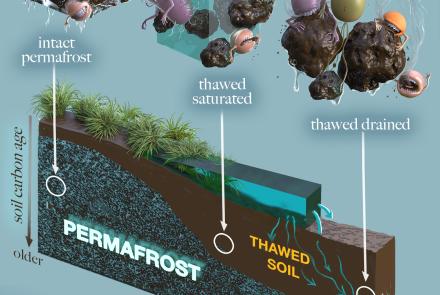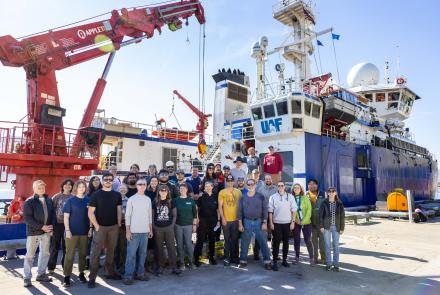Arctic Haze
Distinct reddish-brown layers have been observed many times by jet pilots flying across the Arctic on the transpolar air route. Especially pronounced in winter, these haze layers were first reported more than twenty years ago. When an aircraft is within a layer of Arctic haze, pilots report that horizontal visibility can drop to one tenth that of normally clear sky.
Much of the haze seen in the air is of natural origin, but Arctic haze evidently is man-made. Measurements made by sampling air at Point Barrow, Alaska and other Arctic locations show that the haze contains small amounts of vanadium. The vanadium, being a natural component of crude oil, is injected into the atmosphere in areas of heavy industrial activity.
The Geophysical Institute's Glenn Shaw and his coworkers at other research institutions around the country who are making the measurements are fairly certain that their results imply that the Arctic haze originates in the industrialized portions of Europe. The researchers think that the injected pollution is carried northeasterly toward the Arctic Ocean where some of it is transported directly across the polar region to the Alaskan and Canadian coasts.
Arctic haze is mostly composed of particles of sulfuric acid and organic compounds formed in the air from the combination of naturally occurring chemicals and pollutant sulfur dioxide or hydrocarbon gases. Called aerosols, these resultant particles are small enough to float in the air but are large enough to reflect sunlight, and hence cause haze.
Acid rains created when the pollutant-caused aerosols are washed from the air have destroyed fish in the lakes of Scandinavia and New York. Slightly acidic rains have been detected at Barrow but no damaging ecological effects there have been noted so far.



